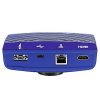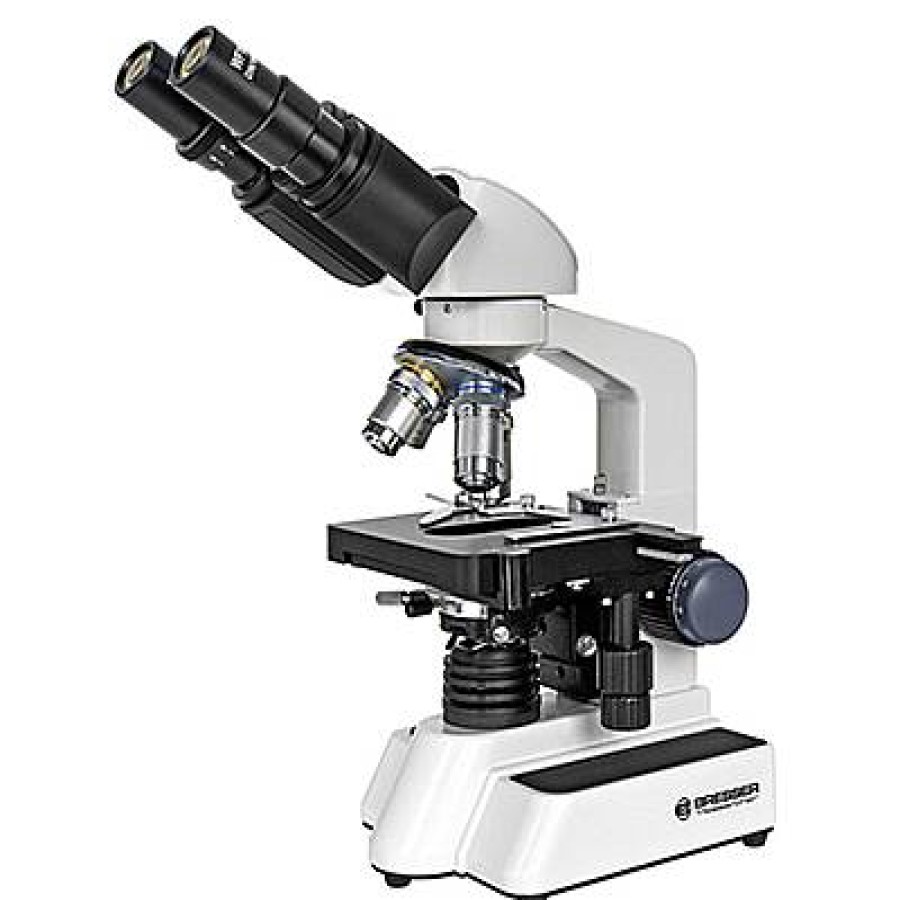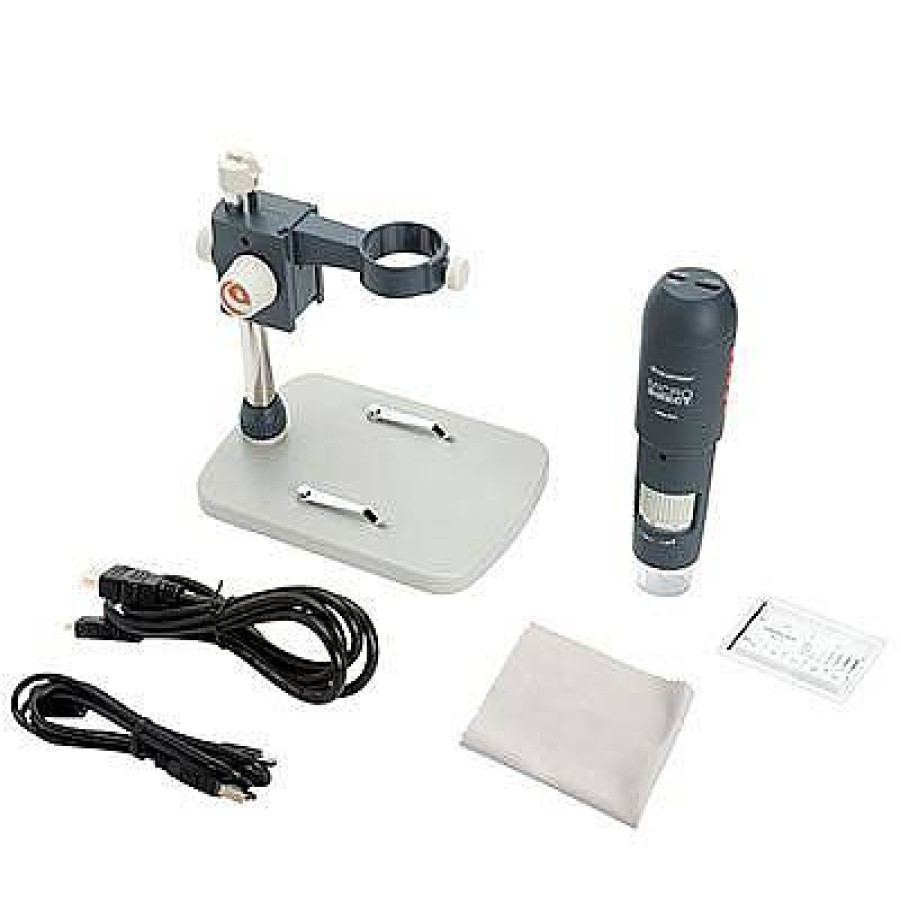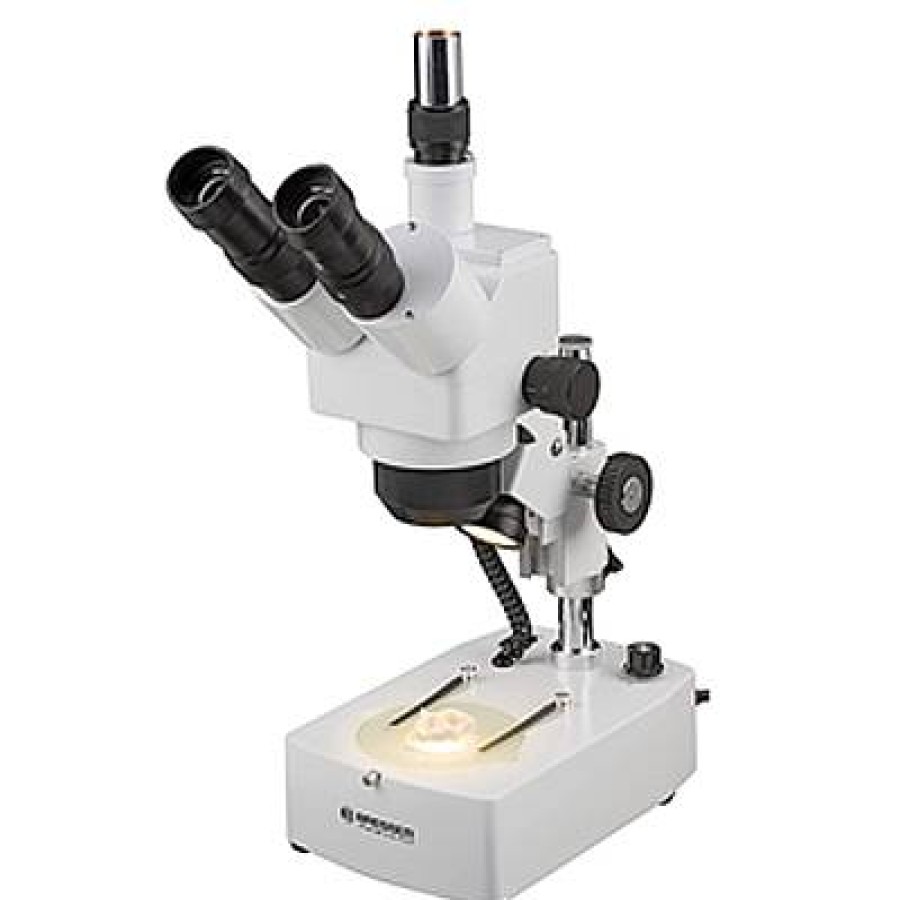Bresser Bresser 40-1000X Trino Researcher Ii Microscope | Microscopes
£444.00 £77.56
Bresser Bresser 40-1000X Trino Researcher Ii Microscope | Microscopes

The Bresser Researcher Trino Ii 40-1000X Microscope Is A Transmitted Light Microscope, Designed For Expert Use With An Impressive Magnification Range Of 40X-1000X. It Features 4 Din Eyepieces And Objectives For A Bright And High-Resolution Image. The Trinocular Head Enables You To Take Pictures Of Observations Using A Mirror Reflex Camera.
Bresser 40-1000X Trino Researcher Ii Microscope Key Features:
- 4 Din Objective Eyepieces Offer An Impressive Magnification Range Of 4X – 1000X
- The Trinocular Head Enables You To Take Pictures Of Observations
- Dimmable Led Light And Double-Lens Condenser Ensure Proper Illumination
- Mechanical Stage Can Be Used For The Precise Placement Of Samples
- Adjustable Eye Relief Ensures Comfortable Use When Wearing Glasses
- Offers Only Transmitter Light For Viewing Samples
- 360-Degree Rotating Head Features 4 Objectives Of 4X, 10X, 40X, And 100X
- 360-Degree Rotating Head Features 4 Objectives Of 4X, 10X, 40X, And 100X
- Can Be Powered By An Ac Power Supply Of 220/240V
- Robust Metal Construction Of The Microscope Weighs Only 3.8Kg
- Two 10X Eyepieces Provide Varied Magnification Possibilities
- Coarse And Fine Adjustment Wheels Ensure Precise Focusing Of The Samples
- Compatible With A Pc Eyepiece Or A Mirror Reflex Camera To Take Photographs
Expanded Bresser 40-1000X Trino Researcher Ii Microscope Key Features:
Varied Fields Of Applications
The Bresser Researcher Trino Microscope Has An Aluminium And Plastic Construction With A Weight Of 3.8 Kg, Making It Ideal For School Use. The Robust Body Can Be Carried From One Place To Another And Aids In Advanced Research Applications. Whether You’E An Amateur Or A Professional, Anyone Can Use This Microscope In The Fields Of Biology, Botany, And Education. The Sturdy And Durable Handling Of The Microscope, Along With The 360-Degree Rotating Head, Ensures Comfortable Use.
Dimmable And Adjustable Illumination
The Built-In Electric Illuminator Of The Microscope Works With The Ac Power Supply To Provide Transmitted Light. The Double-Lens Condenser With An Iris Diaphragm Provides Fine Light Adjustments. The Led’S Intensity Can Be Changed Accordingly Via The Dimmer Knob To Produce Bright And High-Resolution Images.
Range Of Magnification
The Objective Turret Of The Microscope Is Fitted With 4 Din Objectives: 4X, 10X, 40X, And 100X (Oil Immersion). These Objectives, When Combined With The Two Wf 10X Eyepieces, Create A Varied Magnification Range Of 40X – 1000X. The Magnification Can Be Achieved By The Following Formula: Eyepiece Magnification X Objective Magnification. This Means That When The 10X Eyepiece Is Used With A 100X Lens (With Oil Immersion), The Total Magnification Achieved Will Be 10X100, I.E. 1000X. You Can Experiment And Observe The Samples Through Various Magnifications To Produce Different Results.
What’S In The Box?
- 1 X Bresser Researcher Trino Ii 40-1000X Microscope
- 4 X Din Objective
- 2 X Wf 10X Eyepiece
- 1 X Mechanical Stage
- 1 X Condenser
- 1 X Binocular Head
- 1 X Immersion Oil
- Limited 5-Year Warranty
Faqs:
What Can The Trinocular Head Be Used For?
The 360-Degree Rotating Trinocular Head Can Be Used To Take Pictures Of Observations When Using A Mirror Reflex Camera Or A Bresser Microcular. When Used With An Slr Camera The Large Picture Area Causes Shadowing, Which Is Why It Is Designed To Specifically Be Used With A Bresser Microcular. The Microcular And Eyepieces Are Used Together To Produce A Homofocal Image.
How Can The Microscope Table Be Used?
The Included Microscope Table Can Be Used To Precisely Place The Sample To The Exact Millimetre. Simply Place The Object Between The Clamps On The Microscope Table And Move It With The Help Of The Axis Adjustment Directly Under The Objective. The Built-In Vernier At Both Axes Can Be Used To Specifically Set And Shift The Object. Now The Sample Can Be Observed Under Different Magnifications.
Can The Microscope Be Used While Wearing Glasses?
The 23.2Mm Eyepiece Is Equipped With Adjustable Eye Relief Which Makes It Comfortable To Use With Glasses.
How Much Does It Weigh?
The Aluminium And Plastic Construction Of The Microscope Makes It Ideal For School Use And Education Purposes. The Robust Body Weighs Only 3.8Kg And Can Be Carried From One Place To Another.
How Can The Microscope Be Cleaned?
Do Not Disassemble The Microscope, As It May Reduce Performance, And Do Not Wipe The Lenses Aggressively As It May Scratch The Lenses. Simply Use A Soft Brush And A Lint-Free Cloth To Clean The Non-Optical Parts. Make Sure To Disconnect The Microscope From The Power Supply First. For Cleaning Optical Parts, Simply Blow The Loose Dust Away And Use A Lens Tissue Or A Soft Fabric Moistened With Pure Alcohol To Wipe The Surface.
Be the first to review “Bresser Bresser 40-1000X Trino Researcher Ii Microscope | Microscopes” Cancel reply
Related products
Eyepiece Accessories & Filters
Eyepiece Accessories & Filters




















Reviews
There are no reviews yet.